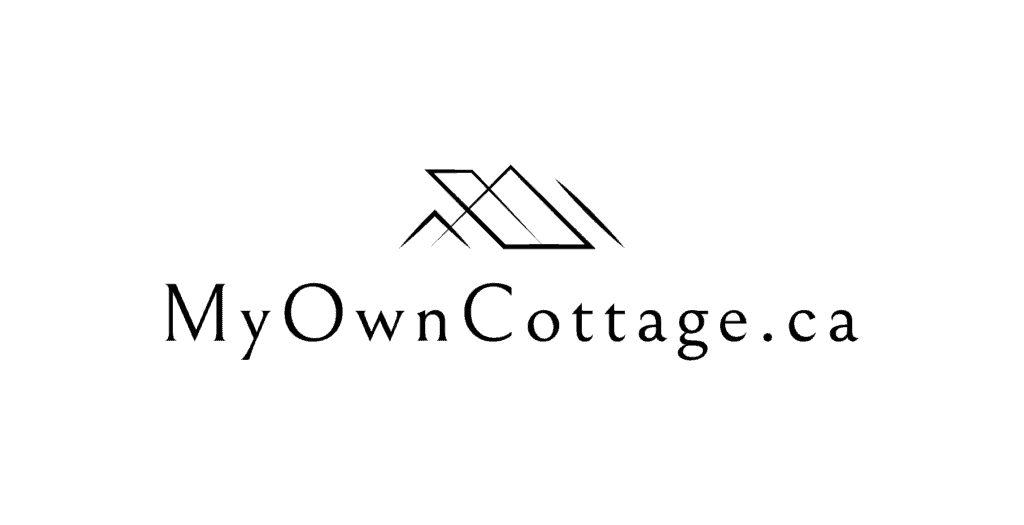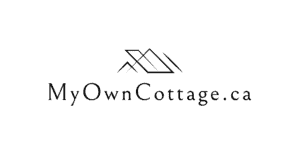Designing for Accessibility in ADUs
Learn about designing for accessibility in ADUs.
Find designs that are perfect for aging in place with multigenerational living, or inclusive housing solutions.
Home » Designing for Accessibility in ADUs
Accessible ADU Design for Inclusive Living
As housing needs evolve in Ontario, more homeowners are turning to an Additional Dwelling Unit (ADU) to create flexible and affordable living options.
For reference, ADUs are also known as granny flats, secondary suites, or in-law apartments.
Whether for aging family members, adult children, or as a source of rental income.
ADUs are becoming an increasingly popular way to boost housing stock and meet intergenerational demands.
How to Design an ADU with Accessibility in Mind
The benefits of building an ADU include added rental income, increased property value, and the flexibility to accommodate extended family along with guests.
But not all additional dwelling unit plans are created equal.
For many households, designing for accessibility is key.
This is especially imperative when these spaces are intended for seniors, individuals with mobility challenges, or those requiring special support.
In this guide, we explore how accessible ADU design can improve comfort, safety, and long-term value.
All while remaining compliant with Ontario Building Code standards.
Single-Floor Living Options
One of the primary advantages of prefab ADUs is the ease with which they can be designed as single-floor living spaces.
This layout eliminates the need for stairs and reduces the risk of falls.
Naturally, this is making it ideal for elderly parents, those with disabilities, or anyone who plans to age in place.
Square Feet and the Foundation of Accessibility
Understanding the various types of ADUs can help you choose the best option for your property and lifestyle.
At My Own Cottage, we specialize in crafting single-family home extensions like tiny homes, carriage houses, and coach houses that are entirely accessible on one level.
These residential units, typically ranging from 400 to 1,000 square feet, offer a manageable, safe, and independent space for residents.
All without compromising on modern comforts.
Zero-Step Entrances and Wide Doorways
Creating a seamless and safe entryway starts with zero-step entrances.
These allow residents using wheelchairs or walkers to enter and exit the residential building without facing any steps or elevation changes.
When paired with gently sloped ramps and slip-resistant surfaces, they ensure year-round accessibility—even during Ontario’s snowy winters.
Wide Doorways and Accessibility Guidelines
Wide doorways are another crucial feature.
Most accessibility guidelines recommend a minimum of 32 inches of clear width to accommodate mobility aids.
We incorporate these elements into every detached ADU, tiny house, or basement apartment we design.
Importantly, this ensures residents can move freely and comfortably throughout the home.
Grab Bars and Roll-In Showers
Bathrooms are among the most high-risk areas in any home.
That’s why grab bars, roll-in showers, and ample wheelchair-turning space are not optional—they’re essential.
Wheelchair Turning Space and Open Floor Plans
We design bathrooms with reinforced walls to support grab bar installation and create showers that allow for easy entry without tripping hazards.
Vanities and toilets are installed at accessible heights, and flooring materials are selected for slip resistance.
We also design open floor plans that provide enough space (typically 5-foot turning radii) for full wheelchair navigation.
For clarity, this means not just in bathrooms but across the entire living area.
💡 These considerations are especially important when creating secondary suites for elderly parents, people with injuries, or those recovering from surgery.
Visual and Auditory Aids in ADU Design
Accessibility goes beyond physical mobility.
For individuals with visual or auditory impairments, assistive technology can make daily living safer and more convenient.
Living Independently from the Main House
We integrate features like motion-activated lighting, voice-controlled smart home systems, and amplified doorbells or visual alert systems.
In cases where residents are hearing impaired, visual fire alarms and vibrating notification devices can provide peace of mind.
These upgrades are especially valuable in detached garage ADUs or laneway houses, where someone may be living independently from the main house.
Ontario Building Code Accessibility Requirements
The Ontario Building Code (OBC) sets strict standards for accessible design, particularly for new residential buildings and additional units.
Key OBC requirements include minimum doorway widths, ramp slopes, and clear floor areas for maneuverability.
At My Own Cottage, we work closely with clients to ensure every prefab ADU meets or exceeds these regulations.
Zoning By-Laws and Building Permits
This includes staying up to date with evolving zoning by-laws, building permits, and local government mandates that apply to ADUs across residential neighborhoods in Ontario.
Whether you’re constructing a separate unit in your backyard or converting a basement apartment.
You can always count on us for code-compliant solutions that prioritize safety and accessibility.
Designing for Visual or Auditory Impairments
When building Additional Dwelling Units (ADUs) that are truly inclusive, it’s essential to go beyond mobility-focused features.
For example, consider the unique needs of people with visual or auditory impairments.
In essence, accessibility is not one-size-fits-all.
ADUs designed with thoughtful features for various disabilities can empower residents to live independently, safely, and comfortably.
Visual Impairments: Enhancing Safety and Navigation
For individuals who are blind or have low vision, ADU design should prioritize clear navigation, tactile cues, and consistent layouts.
Some best practices include:
High-contrast finishes between walls, floors, and fixtures to help with visual differentiation.
Tactile flooring at entryways or room transitions to signal changes in environment.
Smart lighting systems with voice activation, motion sensors, or automatic dimming to improve ease of use and safety.
Minimizing clutter and using open floor plans to reduce the chance of tripping or bumping into furniture.
Braille labels on appliances, thermostats, or light switches can make a big difference for daily routines.
💡 Prefab ADUs built by My Own Cottage can be customized to include these features, offering greater independence for residents with visual impairments.
Auditory Impairments: Supporting Communication
For residents who are deaf or hard of hearing, visual cues become vital.
ADUs can be enhanced with features that offer clear alerts and simplify communication, including:
Visual fire and carbon monoxide alarms with flashing lights in addition to standard audible alarms.
Doorbell systems that trigger light notifications or vibration devices.
Amplified telephones, intercoms, or hearing loop systems for easier communication with the main home or visitors.
Smart home technology that integrates alarms, security, and notifications into a single accessible interface.
💡 These features are especially important in detached ADUs, coach houses, or laneway suites where the resident may live independently from the primary residence.
ADUs that Accommodate a Range of Disabilities
By designing ADUs that accommodate a range of disabilities Ontario homeowners not only increase their property’s usability.
Rather, they also make it more inclusive for future residents, guests, or rental tenants.
It’s a smart, forward-thinking approach to accessible housing that meets real-world needs.
All while aligning with Ontario Building Code requirements and local zoning ordinances.
Intergenerational Housing
One of the most common use cases for accessible ADUs is intergenerational living.
As home prices rise and housing affordability declines, more Ontario families are choosing to house extended family under one roof or at least on the same property.
ADUs for Family Members
Accessible ADUs allow elderly parents to live independently while staying close to their adult children and grandchildren.
For younger generations just entering the workforce or completing school, in-law units offer a stepping stone to independence.
These ADUs also support multigenerational caregiving arrangements, which can relieve stress and reduce reliance on external care facilities.
💡 By designing your ADU with accessibility in mind, you’re investing not just in a flexible accessory structure, but in your family’s well-being and future.
Accessibility Across ADU Types
Accessibility features can be incorporated into all types of ADUs, including:
Internal ADUs (e.g., basement apartments)
Attached ADUs (e.g., additions to a main residence)
Detached ADUs (e.g., tiny homes, laneway houses, or coach houses)
Solutions for Your Dreamy New ADU Home
Accurately estimating the additional dwelling unit cost is essential for setting a realistic budget and ensuring the financial success of your project.
Moreover, each ADU has its own unique design considerations.
For example, basement suites may require elevators or stair lifts, while detached units can be purpose-built with wide corridors and barrier-free layouts.
Our design team ensures that no matter your property type—urban or rural, small lot or large—we can create a fully accessible solution that meets your unique needs.
Planning, Budgeting & Next Steps
Building an accessible ADU doesn’t have to break the bank.
With prefab construction, you benefit from reduced build times, minimized labor costs, and a streamlined construction process.
Moreover, this allows for high-quality customization at a reasonable price.
Applicable Owner-Occupancy Requirements
We help you plan your budget based on factors like lot size, accessibility upgrades, and applicable owner-occupancy requirements or zoning ordinances.
Our team also handles the permit application process, so you’re fully aligned with your city council and local regulations from day one.
Higher Property Value & Additional Income
Accessibility can also be a wise financial move.
Whether you’re planning to accommodate family members or rent to a broader audience.
Accessible ADUs often command higher property value and open your property to more eligible homeowners and rental housing opportunities.
In fact, many Ontario homeowners now see ADUs as both a housing solution and a source of additional income.
Build Accessible & Smart with My Own Cottage
Designing an accessible ADU is more than a home improvement project—it’s a long-term investment in safety, independence, and inclusivity.
At My Own Cottage, we take pride in helping Ontario property owners create beautiful, functional accessory dwelling units that enhance lives and communities.
Contact us Today for Personalized Design Guidance
If you’re thinking about building a granny flat, guest house, or any kind of additional unit on your property, let’s make sure it’s designed to be accessible from the ground up.
Contact us today for personalized design guidance with a free consultation or simply fill out the form below to get started!

